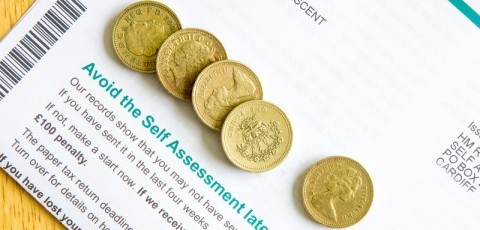If you pay income tax via self-assessment, and have a tax liability for the current year, you may need to make advanced payments for the following tax year too – known as payments on account.

How do you calculate the payments on account?
If your tax liability for the previous tax year came to £1,000 or more, you have to pay the same total tax liability in advance, split between two payments. You are also exempt if at least 80% of the tax you owed for the previous tax year was deducted at source.
For example, if you owe £5,000 to HMRC for the 2014/15 tax year, you have to pay the £5,000 total by 31st January 2016 plus an extra £2,500 by 31st January 2016, and a final £2,500 by 31st July 2016.
When it comes to the following year’s self assessment (2015/16), if your business boomed during the tax year and you subsequently owe £6,000 in tax, you will have to make a £1,000 ‘balancing payment’, as you only paid £5,000 in payments on account during the previous year.
On the other hand, if you only owe £4,000 in tax, you will be refunded £1,000 as you overpaid via your payments on account during the previous year.
If the total tax you owe is £2,000 or less, HMRC can collect this outstanding sum via the PAYE system (i.e. it will be deducted from your salary).
When do you have to make payments on account?
The first installment should be paid by 31st January, at the same time as any outstanding tax for the previous tax year is paid to HMRC.
The second installment should be paid by 31st July.
What if your earnings have gone down?
If you are preparing your self assessment return for the previous tax year (2014/15 for example), but you expect to earn less during the current tax year (2015/16), you can apply to HMRC to reduce your payments on account. You can do this via Self Assessment Online, or ask your accountant to do this for you.
Take care when applying to reduce your payments on account, as you will have to pay interest on any tax you are subsequently found liable to pay if your income did not deteriorate as you expected.
Further Information
- A wordy HMRC manual describes the payments on account process here.
- Read our overview of the self assessment process.
- Read a useful guide by Emily Coltman from FreeAgent here. It’s written for sole traders / partnerships, but describes the general payments on account process – which is relevant to limited company directors.


Follow Company Bug